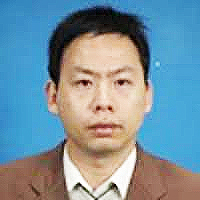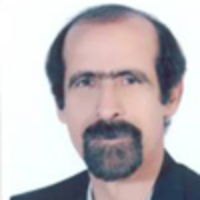Time to Terminate LNT: Radiation Regulators Should Adopt LT
Published on: 26th June, 2017
OCLC Number/Unique Identifier: 7286353862
The linear no-threshold hypothesis (LNT)-the basis of radiation regulatory policy-extrapolates from observed high-dose harm to assumed low-dose harm, entailing that all ionizing radiation is harmful, by denying any biological response to damage and asserting cumulative lifetime harm, regardless of dose or dose rate. All aspects of LNT are demonstrably false. There are evolved biological responses that repair or remove radiogenic damage from low doses and dose rates, thereby averting acute harm and precluding the alleged cumulative damage. LNT and its offspring, the “as low as reasonably achievable” principle, do not err on the side of caution; neither is truly conservative. The public needs protection from radiophobia, rather than from low-dose radiation exposure. Neither radiation regulations nor medical practice should be based on LNT, but rather, at least as a first step, on a linear (down to a) threshold (LT) model.
Targeted and non-targeted effects of radiation in mammalian cells: An overview
Published on: 12th April, 2021
OCLC Number/Unique Identifier: 9026724302
Radiation of different wavelengths can kill living organisms, although, the mechanism of interactions differs depending on their energies. Understanding the interaction of radiation with living cells is important to assess their harmful effects and also to identify their therapeutic potential. Temporally, this interaction can be broadly divided in three stages – physical, chemical and biological. While radiation can affect all the important macromolecules of the cells, particularly important is the damage to its genetic material, the DNA. The consequences of irradiation include- DNA damage, mutation, cross-linkages with other molecules, chromosomal aberrations and DNA repair leading to altered gene expression and/or cell death. Mutations in DNA can lead to heritable changes and is important for the induction of cancer. While some of these effects are through direct interaction of radiation with the target, radiation can interact with the surrounding environment to result in its indirect actions. The effects of radiation depend not only on the total dose but also on the dose rate, LET etc. and also on the cell types. However, action of radiation on organisms is not restricted to interactions with irradiated cells, i.e. target cells alone; it also exerts non-targeted effects on neighboring unexposed cells to produce productive responses; this is known as bystander effect. The bystander effects of ionizing radiations are well documented and contribute largely to the relapse of cancer and secondary tumors after radiotherapy. Irradiation of cells with non-ionizing Ultra-Violet light also exhibits bystander responses, but such responses are very distinct from that produced by ionizing radiations.
Wifi and health: Perspectives and risks
Published on: 12th October, 2017
OCLC Number/Unique Identifier: 7317602372
Increased exposure to electromagnetic fields such as radio frequencies used by Wifi technology raise questions and concerns about their impact on health. For answer these questions, several scientific studies have carried out followed by results publication in prestigious scientific revues. Literature conducted on the effects of non-ionizing radiation and Wifi waves is vast and sometimes controversial. Epidemiological studies and the results of in vitro and in vivo experimental studies have showed the biological effects of electromagnetic field in different frequencies range. These effects caused disorders at the molecular and behavioral level. However, these studies were insufficient to confirm the directly related effects to the cause. Therefore, further research must be done to raise the controversy about the safety of wireless waves.
Journey with a 21 weeks primi with acute massive pulmonary thromboembolism secondary to possible “Latent Lupus”: an audacious ride
Published on: 9th March, 2022
OCLC Number/Unique Identifier: 9445952693
In pregnancy, the incidence of pulmonary embolism (PE) is increased fivefold when compared to nonpregnant women of the same age, and PE is one of the leading causes of death during pregnancy.However, the diagnosis of PE among pregnant women is complicated by concerns regarding radiation exposure. Systemic lupus erythematosus (SLE) is an autoimmune disorder with a wide array of presentations and a predilection to affect women of certain ethnic backgrounds. The hallmark of the disease is multisystem involvement, dispersed in time and severity. Usual pulmonary involvement includes pleuritis, pleural effusions, pneumonitis, shrinking lung syndrome, pulmonary hypertension, and alveolar hemorrhage. Pulmonary embolism (PE) is a relatively unusual presentation of SLE. We report the case of a 20-year-old primi at 21 weeks gestation with an acute PE with central chest pain and shortness of breath. The absence of overt signs and symptoms and traditional risk factors prompted a fragmentary workup. This led to the detection of antibodies sensitive for SLE, in the absence of overt signs and symptoms. We revive the concept of latent lupus, a condition construed as early lupus. We firmly suspect direct causation between SLE and PE. Further studies are needed to establish pathogenesis to facilitate early diagnosis and prevent morbidity and mortality from PE. Due to persistent hypotension, thrombolytic therapy with streptokinase was administered and the clinical and hemodynamic response was excellent, with no maternal or fetal hemorrhagic complications. The clinical presentation of pulmonary embolism is sometimes camouflaged by the physiological changes that occur in pregnancy and diagnosis is often delayed by a reluctance to expose the fetus to ionizing radiation.




